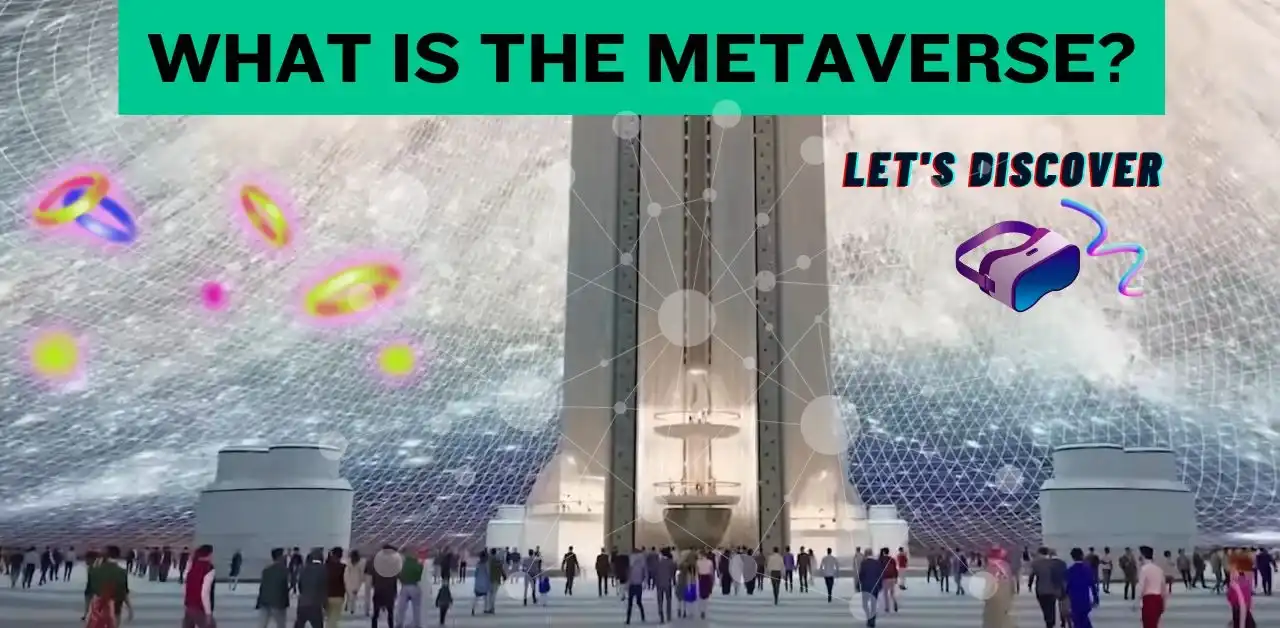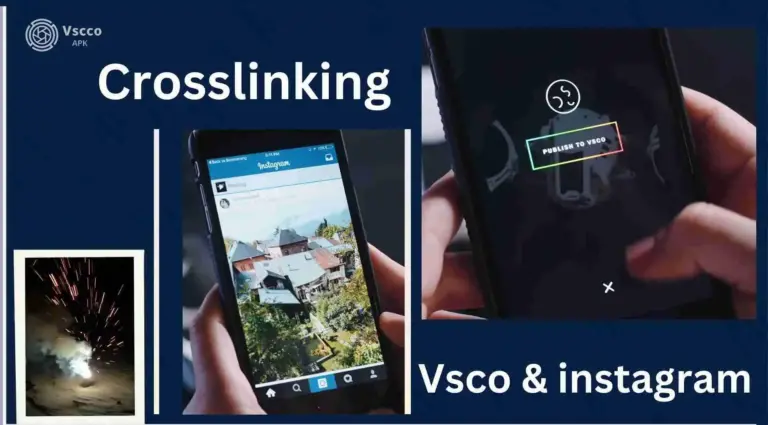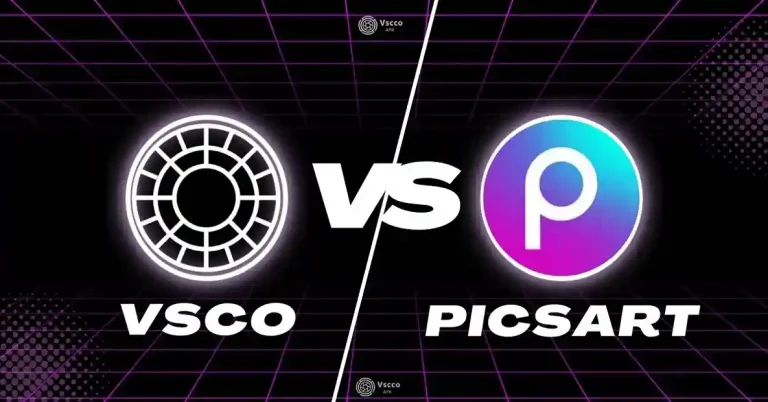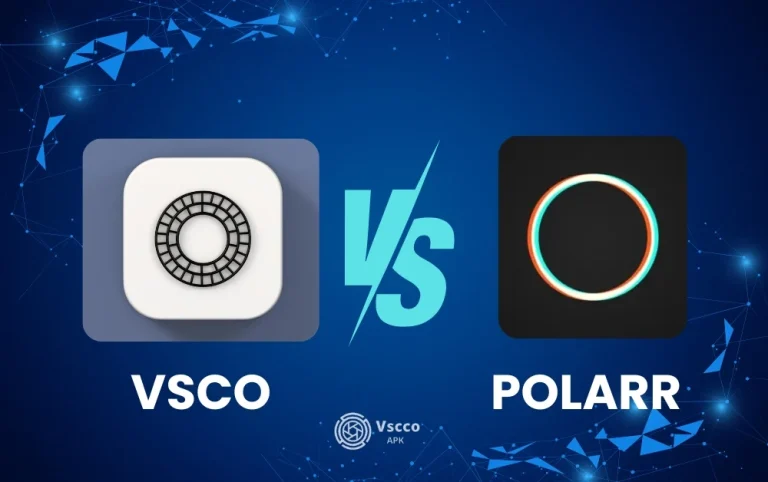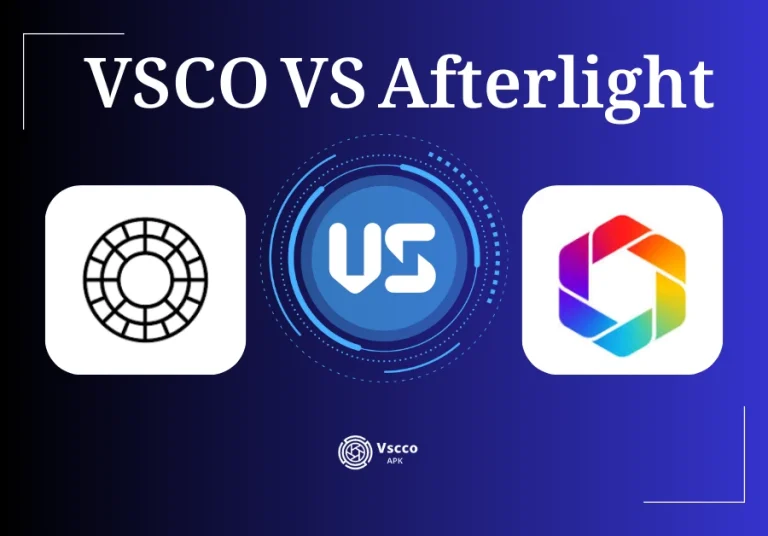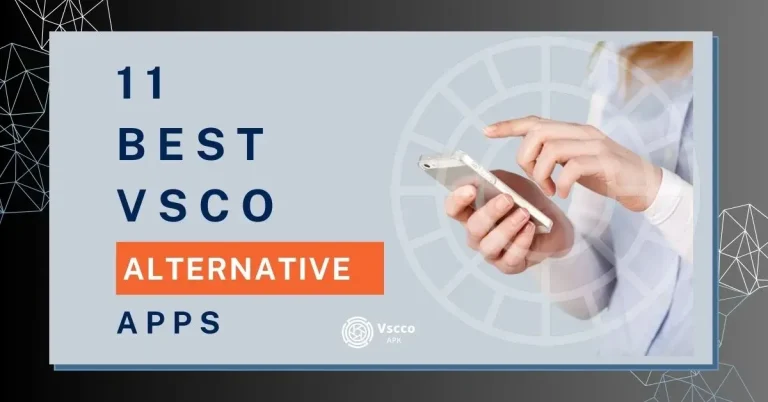What Is the Metaverse in 2025 & after?
What Is the Metaverse? For many people, the word “metaverse” might supplicate images from science fiction novels, an abstract concept challenging to comprehend in practical terms. With our rapidly expanding digital world, including digital visuals, the term is increasingly being rumoured around, leaving everyday people puzzled and asking, “What exactly is a Metaverse, and how will it affect me?”
However, the metaverse concept is problematic to those outside of tech circles and futurist predictions, making it inaccessible for non-experts who might want to understand it better. Though people hear about virtual worlds, avatars, and digital economies, many feel disconnected from these ideas, which seem abstract or disconnected from daily Life.
Furthering confusion is that its definition has yet to be universally agreed upon – compounding all that with no set framework that defines it all yet!
Lack of clarity creates a barrier, leading many people to question if the Metaverse is something they need to understand now or simply another tech buzzword that will pass. Yet, it represents more than a passing trend: an entirely new way humans interact with digital content.
But how can everyday users navigate this unfamiliar landscape without becoming lost in all the hype?
Let’s Break down and connect the Metaverse into understandable pieces that connect to technology that we already use and comprehend.
Imagine the Metaverse as the next stage in the evolution of the Internet, an immersive 3D experience seamlessly integrated into daily life – whether that means working from virtual offices, attending digital concerts, or trying on clothes for real before making purchases online- it promises a greater level of interaction and convenience than ever before in digital experiences.
In this article, we’ll unmask the Metaverse by unpacking its key concepts and exploring its history from the early internet days up until today. By the time you finish reading this piece, you will understand what the Metaverse is, why it exists, and how it could soon become part of your daily Life.
Exploring the Metaverse Concept

Although “Metaverse” might sound futuristic, at its core, it refers to something simple – an alternative way of experiencing and interacting with the digital world. Please think of the it as an Internet extension where users can explore virtual environments together while interacting or even create their own digital experiences.
Imagine wearing a headset and instantly appearing in an office where you could collaborate with colleagues from around the world as though in one physical room or accessing an online shopping mall where you could try on clothes in virtual fitting rooms before purchasing items that will arrive directly at your door in real life – these experiences are made possible thanks to the Metaverse.
The Metaverse reaches beyond virtual reality headsets or gaming; it surrounds augmented reality (AR) technology as well, where digital information can be overlaid in real-world environments.
For example, your phone could help you visualize how a piece of furniture would look alike in your living room before purchasing it, or you play Pokemon Go, where digital creatures come to Life in real-world settings.
The metaverse concept is still evolving, with various companies having different visions of its form. Some envision an interactive VR world, while others imagine physical and digital experiences where online and offline experiences collide. But whatever its form may take, the Metaverse will revolutionize how we engage with technology and each other.
The Evolution of the Internet
Looking back at its evolution over time is helpful in understanding where the Metaverse is headed. What we know as “the internet” today did not emerge overnight but through decades of technological innovations that progressively made Life more connected, interactive, and seamless in our daily lives around us.
At first, the Internet was just a network of computers connected by text-based messages and documents shared among themselves. This was during the mainframe era, where only certain individuals had access; everything was very basic and technical. Later came the personal computing revolution, which brought the Internet into more homes.
The subsequent significant development was the mobile Internet, which put its power directly in our pockets via smartphones. Now, we could access information, communicate, shop, and make purchases wherever we were located – not to mention social media, apps, and streaming services that made browsing much more visual and interactive than before!
Now, we stand on the brink of another major transition: moving from a two-dimensional internet we view through screens to a three-dimensional metaverse we can enter and interact with directly. This goes far beyond simply wearing VR headsets; instead, this involves creating a digital environment as rich, varied, and immersive as the physical one–where people can work, play, socialize, and create in ways never possible.
The Metaverse builds on all that came before. Combining elements from the Internet, social media, and video gaming into something new – just as the Internet revolutionized communication, shopping, entertainment, and commerce in our daily lives; similarly, the Metaverse promises to transform how we experience the digital world.
However, remember that the Metaverse is in its infancy, just as the Internet began with simple websites and email before growing into what we know today. Eventually, the Metaverse will also become even more advanced, interconnected, and part of everyday life.
At its core, the Metaverse represents not just the evolution of the Internet but also how we connect with the world at large. Like its predecessor, its true potential will only become clear over time as its presence grows and spreads across it.
Historical Background and Origins
Neal Stephenson first introduced the word “metaverse” into popular discourse with his science fiction novel Snow Crash, published in 1992. Stephenson depicted a futuristic society where digital avatars interacted with each other and digital environments through virtual reality-based virtual environments known as the “Metaverse.”
This virtual land served as an engaging escape from physical limitations while providing users with new digital environments to experience.
Early Sci-Fi Influences

Snow Crash’s Metaverse was conceived of as a fascinating 3D virtual space resembling our physical universe and allowed users to live out alternate lives, interact in digital environments, and experiment with novel forms of social interaction through avatars. The idea had deep ties to cyberpunk literature, which explored themes related to how we, as humans, interacted with technology – potentially with oppressive results if these relationships became toxic over time.
Stephenson did not pioneer the idea of the Metaverse alone; other science fiction works, such as The Matrix (1999) and Ready Player One (2011), also explored futures where humans could engage with digital worlds that blended or replaced reality. These narratives helped form our modern understanding of the Metaverse by exploring how digital environments may shape identity, social structures, and reality itself.
From Second Life to Modern Platforms
Linden Lab took an important step toward realizing their concept of the Metaverse with their 2003 launch of Second Life, an online virtual world in which users could create digital avatars, interact with one another, build virtual objects, and engage in economic transactions using real money.
Second Life established the notion that virtual worlds could provide complex social and economic interactions; since then, this notion has only gained ground. Fortnite, Roblox, and Minecraft have built upon it by giving users not only gaming experiences but also spaces for socializing, content production, and virtual events.
Though these platforms don’t live up to Stephenson’s dream of an interconnected and immersive universe, they still fall short.
Smart Contact Lenses
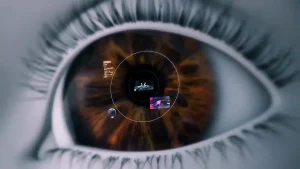

Imagine entering the Metaverse using nothing more than intelligent contact lenses. Instead of holding phones or wearing bulky glasses, everything would simply appear right before your eyes.
Augmented reality (AR) contact lenses from companies like Mojo Vision, InWith, and Apple aim to bring digital information directly into your field of vision. Wearing AR contact lenses could allow you to see navigation arrows, notifications, or zooming objects by just moving your eyes – the lenses work by projecting images onto the retina using tiny displays, sensors, and a neck-worn device, creating invisibility between reality and digital information – it’s like having a computer on your eye that helps with everything from finding directions, checking weather reports or even engaging with metaverse interactions!
These AR lenses could make everyday Life simpler and disrupt industries like healthcare and construction, where real-time information is essential. The future is all about hands-free technology: just one glance will connect you! Would you wear smart lenses? The possibilities are limitless-they could change our world for good!
Key Technologies Powering the Metaverse
Now, let’s discuss some fundamental Technologies empowering the Metaverse.
Virtual and Augmented Reality

Virtual Reality (VR) and Augmented Reality (AR) technologies form the cornerstone of metaverse experiences, providing great environments where users can interact within digital worlds.
VR creates an entirely virtual space that combines physical reality; users typically experience this through headsets like Oculus Rift or HTC Vive, which provide absorption of 3D virtual space where users can look around freely while moving around as though physically present.
AR, on the other hand, overlays digital elements onto physical reality to enhance user environments with computer-generated content.
One popular example is the mobile game Pokémon Go. Furthermore, in terms of theory, AR could enable users to interact with virtual objects in physical spaces, thereby blurring boundaries between virtual and real worlds.
Blockchain and Cryptocurrencies
Blockchain technology and cryptocurrencies are essential components of the Metaverse, providing digital transactions, ownership, and governance services.
Blockchain is a decentralized ledger technology that ensures transparency and security within digital environments, it permits the creation and exchange of digital assets such as land parcels, items, and currencies in a secure, verifiable fashion.
Cryptocurrencies, which use blockchain technology, enable financial transactions within the Metaverse. Platforms like Decentraland and The Sandbox utilize their respective cryptocurrencies (MANA and SAND, respectively) to allow financial transactions such as buying virtual real estate or trading digital goods between users. Cryptocurrencies create an economy within the Metaverse where value exchange can occur as any accurate world exchange would do so effectively.
Blockchain also facilitates a decentralized world, guaranteeing no single entity controls all aspects. This decentralization is essential to maintaining user autonomy and facilitating peer-to-peer interactions without intermediaries.
Role of NFTs:
Non-fungible tokens (NFTs) play an essential part in the Metaverse by establishing ownership and singularity of digital assets. An NFT is a type of digital asset that represents ownership over something specific—like art, music, or virtual real estate—stored on blockchain and verifiable by nodes for verification and impossible duplication.
NFTs (Net Financial Tokens) are used in the metaverse economy as a form of representation for virtual items like digital clothing for avatars or plots of virtual land. Decentraland offers such NFTs for purchasing plots of land, which users can then develop or sell, providing secure ownership transferability within its economy and permitting users to build and trade within it.
NFTs also enable creators to monetize their work within the Metaverse, with artists selling digital art pieces as NFTs and game developers creating unique in-game items that players can purchase, sell, or trade. This approach not only adds more excellent value to digital assets but fosters an active creator economy within it.
Digital Proof of Ownership and Interoperability
An essential challenge lies in making digital assets easily identifiable across platforms and interoperability. A digital proof of ownership (often implemented via blockchain and NFTs) enables users to prove ownership of an asset, such as a virtual house or avatar outfit, regardless of wherever they go in the Metaverse.
Interoperability refers to the ability of different platforms and systems to work together. For instance, a virtual car purchased on one platform can be used on another without losing its value or functionality, creating a user-friendly experience across platforms and systems within it.
Several metaverse platforms are developing standards and protocols to increase interoperability. Initiatives like the Interoperable Avatar Project aim to create avatars that can freely roam between virtual worlds while bringing their appearance, accessories, and earned achievements along with them.
Digital proof of ownership and interoperability are foundational elements necessary for the Metaverse to function as an integrated digital universe rather than a mixture of unconnected virtual spaces.
Artificial Intelligence (AI) & Machine Learning
Artificial Intelligence (AI) and Machine Learning technologies are central to creating the Metaverse. Through them, intelligent environments that respond to user behaviours can feel more natural, providing users with more engaging virtual realities that feel real enough for everyday use.
AI plays an integral part in creating realistic avatars and non-player characters (NPCs) within the Metaverse, acting as both virtual assistants and NPCs to interact meaningfully with users in meaningful ways – for instance, by holding conversations, providing assistance, or learning from interactions to improve future responses. An AI assistant could even help find products you are searching for, much like human assistants do at physical stores.
Machine Learning, a subset of AI, allows the Metaverse to optimize and personalize user experiences continually. By analysing vast amounts of data, machine learning algorithms can predict user preferences, recommend activities, or anticipate what users wish to do next. This continuous learning process ensures the Metaverse adapts uniquely to every person who experiences it.
Advanced Computing and Real-Time Rendering
The Metaverse requires tremendous computational power for its smooth functioning, especially given the requirement of real-time rendering of complex 3D environments. Real-time rendering refers to producing graphics in real-time, creating an engaging experience and interesting continuity for users.
Advanced computing – mainly through GPUs (Graphics Processing Units) and cloud computing – lies at the core of real-time rendering. GPUs quickly process complex graphics so users can experience virtual worlds fascinating without interruption or delay. Cloud computing takes this further by offloading computational work to remote servers so that even less powerful devices can access high-quality experiences.
Real-time rendering also ensures the Metaverse is interactive. As soon as your avatar moves, picks up an object, or interacts with another user, the Metaverse must immediately update visuals and physics accordingly – giving a virtual environment experience rather than simply serving as a static virtual space.
Networking Technologies & 5G
Networking technologies, especially 5G, are vital to the operation and accessibility of the Metaverse. Users will interact in real-time within complex digital environments that require fast, reliable internet connections with low latency for optimal functioning.
5G allows for better connectivity in more places, providing users access to the Metaverse from their homes and while on the move. Mobility is essential to making metaversality part of daily Life.
Future development will depend on advances in networking technology, specifically 6G networking technology, which will push back against limits imposed by speed, capacity, and global connectivity issues.
Hardware-Headsets, Wearables, and More
Hardware provides access to the Metaverse. From headsets and wearables, these devices facilitate an immersive experience so users can fully gripping themselves in virtual realities.
Headsets like the Oculus Rift, HTC Vive, and more affordable Oculus Quest are currently the go-to devices for experiencing virtual reality (VR). These headsets provide three-dimensional imagery from virtual world environments and track head movement via sensors so users can look around naturally while engaging with their surroundings.
Wearable devices such as haptic gloves and suits offer users an extra level of immersion by giving physical feedback that allows them to “feel” the virtual world more vividly and realistically. For example, when picking up objects in virtual reality environments or touching any of them in real life using any object from outside their reality experience with an object from inside reality environments using real-world objects as virtual reality tools, haptic gloves simulate touch sensation for more tangible experience & realistic touch realism feelings.
Emerging technologies, like AR glasses and contact lenses, are designed to overlay digital information over physical reality more exciting.
What Metaverse is & what it isn’t
It’s very important to understand what Metaverse is and what it is not, so let’s discuss it in a little detail.
The Metaverse from the Current Internet
The Metaverse has often been described as the next evolution of the Internet. Yet, we must understand how it differs from what we currently use – our current Internet is predominantly two-dimensional, where users interact with websites, social media accounts, and online services through 2D screens that we access via clicks, taps, or written commands.
On the contrary, it is defined as an immersive 3D environment in which users can interact in real-time with digital objects in a shared virtual space.
A 3D Model-Found on the Internet
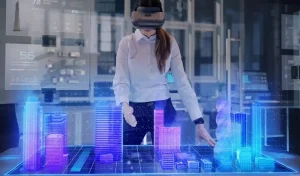
The Metaverse can be thought of as a three-dimensional representation of the Internet. Imagine exploring it like you were traveling through an open virtual world in which every website is represented by physical buildings that can be entered and interacted with, providing more intuitive and engaging ways for discovering content, communicating with other individuals, and conducting transactions.
Instead of searching websites by typing their URLs, users would enter a virtual store where digital items could be purchased while conversing with customers and sales assistants in real time. Social media no longer involves scrolling feeds but visiting a virtual park to interact with friends represented by avatars in real time.
This transition from text-driven Internet browsing to experience-led metaverse usage represents an extraordinary revolution in how society utilizes digital technologies.
Common Misconceptions
As the concept has gained popularity, several misconceptions surrounding its definition have developed. One common belief is that virtual reality (VR) constitutes all that constitutes it. Although VR may form part of this phenomenon, its scope covers not just VR but also augmented reality (AR), in which digital content overlays onto physical reality and other digital spaces that can be accessed using traditional screens.
Another common misperception about the Metaverse is that it consists solely of one platform or service, such as a game or virtual world. But in reality, the term refers to an expansive concept made up of numerous interlinked platforms, experiences, technologies, and services—not controlled or owned by any single company—where users can navigate across its various spaces.
Misconceptions also include its exclusive commitment to gaming. While gaming certainly plays a part, other elements like social spaces, work environments, educational platforms, etc., are also part of it.
The Metaverse Versus Video Games
At first glance, it may be easy to mistake the Metaverse for video games; after all, many early experiences of its likeness can be found within this medium. However, while video games provide entertainment value and serve a specific function in our society, the Metaverse refers to much broader concepts.
At first sight, video game experiences tend to be linear and goal-oriented: Players follow an established narrative, complete assigned tasks, or compete against one another in a structured environment. By contrast, the Metaverse offers users more freedom of action; its open space environment encourages experimentation without regard for winning or losing outcomes but rather promotes shared experiences.
Key Elements
Engage and Present:
One of the distinguishing features of the Metaverse is its sense of presence. Unlike traditional online experiences where users interact with flat screens, metaverse experiences aim to involve users within virtual worlds through technologies like virtual reality (VR), augmented reality (AR), and three-dimensional graphics while creating an unprecedented interactive experience.
When in the Metaverse, you don’t simply observe a digital space; you are part of it. From walking through a virtual city to attending digital concerts or working alongside colleagues in 3D offices – every interaction in this virtual environment should feel authentic to create the maximum sense of presence possible for users. That sense of connection sets the Metaverse apart from any digital experience we’ve encountered previously.
Interoperability Between Platforms:
Interoperability is another critical element. This term refers to the ability of different systems, platforms, and applications to work together without creating friction in their operation. Within virtual worlds, users should be able to quickly move their digital identities, assets, and experiences from one virtual environment to the next.
Imagine purchasing digital clothing in one virtual world and wearing it again later on another virtual platform or earning virtual currency from one game and using it to buy items on another platform – such interoperability requires that metaverse platforms adhere to consistent standards and protocols, creating one connected digital ecosystem.
Interoperability ensures that the Metaverse is more than simply a collection of virtual worlds; it provides a cohesive digital universe where activities across platforms logically merge to give users an enjoyable and integrated experience across different digital environments.
Persistence and Continuity:
Persistence and continuity are at the core of the Metaverse, ensuring that its digital world remains consistent and evolving even when you’re not online. In the Metaverse, its environment persists even without our direct participation; for instance, when building or planting virtual homes or gardens, these remain in place and may change or grow over time like they would in physical reality.
This continuity also extends to your digital identity and possessions; your avatar, achievements, and digital assets remain consistent across sessions and platforms, providing an exciting experience every time you log in – unlike many current online experiences where data or progress may be lost when leaving one platform for another.
User Identities and Avatars:
One of the most charming aspects is representation of user identity through avatars or digital characters. Your avatar reflects who you are and your personality, preferences, and aspirations within its realms; customizable avatars allow for even further expression than might otherwise be possible in physical reality.
Your avatar provides you with a means of communicating, engaging with others, and exploring the virtual world, all while representing who you are as a digital identity – from appearance and social connections to achievements and virtual assets. As your avatar moves through different virtual environments, it ensures a personalized and consistent user experience.
Digital Economies and Virtual Goods:
The Metaverse is more than just an arena for socialization and entertainment; it also supports vibrant digital economies, with virtual goods and services playing a central role. These economies rely heavily on exchanged digital assets, ranging from virtual real estate and clothing for avatars to more complex NFTs (Non-Fungible Tokens), which represent ownership over unique digital creations.
Users can purchase, sell, and trade virtual goods using digital currencies based on blockchain technology. This creates a new form of economy where value derives from digital scarcity and ownership – for instance, on platforms like Decentraland or The Sandbox, where users purchase land to develop and then sell for profit as in real Life.
Existing Platforms & Prototypes
Fortnite, Roblox, and Beyond:
Fortnite and Roblox provide glimpses into what might one day become the Metaverse. While both began as games, both have since expanded far beyond just shooting and survival gameplay – Fortnite serves as a virtual stage for concerts, movie screenings, social gatherings – and even Travis Scott concerts! Millions of people logged on exclusively during his performance on Fortnite, making it one of the largest virtual events ever!
Roblox, on the other hand, is an online platform where users can design and play games created by other users – acting like a digital playground where people can express their creativity while socializing with one another. Roblox has proven incredibly popular with younger audiences by showing them that entertainment, social interactions, and user-generated content could all come together into one experience.
Decentraland, Sandbox, and Blockchain-Based Worlds:
Decentraland and The Sandbox represent an emerging wave of metaverse platforms based on blockchain technology, offering users access to buy, sell, and trade virtual land using cryptocurrency. Decentraland allows customers to purchase plots of land before developing it with virtual buildings or experiences and selling or renting out these spaces to make money off these plots of land.
The Sandbox works similarly, providing users with a virtual world in which they can build, own, and monetize gaming experiences with non-fungible tokens (NFTs). Leveraging blockchain ensures these digital assets remain safe from theft while verifying ownership transfer – making these platforms more than virtual worlds; they form part of an emerging digital economy.
Meta’s Horizon Worlds and Related Corporate Ventures:
Meta, formerly known as Facebook, is one of the driving forces in creating an idealized metaverse. Horizon Worlds serves as its main platform for creating immersive social experiences within virtual reality; users can create custom virtual worlds using its user-friendly design toolkit and host events within it; avatar-powered communication and interactions are available between each other and can interact seamlessly using these experiences combining social networking with VR technology.
Horizon Worlds forms part of Meta’s larger strategy to develop, by investing billions into creating experiences that combine these aspects successfully together – its investment will lead to its future growth of an idealized Metaverse!
Microsoft and Google also explore the concept through various ventures, from virtual collaboration tools to augmented reality applications. Their investments demonstrate its promise as part of our daily digital lives.
Lessons learned from early virtual worlds like Second Life:
Before Fortnite, Roblox, and Decentraland existed, there was Second Life, launched in 2003 as a virtual world that allowed users to create avatars, interact with others, and build their virtual environments. While Second Life never gained mainstream appeal, it laid much of the groundwork for what we now consider to be the Metaverse.
Second Life taught us invaluable lessons on the challenges associated with creating virtual worlds. One key takeaway was its emphasis on community and social interaction—its success rests heavily upon relationships and communities built between users. A successful metaverse requires more than impressive technology—it needs something that draws users back, offers them something meaningful to invest in their time with, and encourages meaningful connections between its inhabitants.
Second Life demonstrated the potential of virtual economies; users could buy and sell virtual goods and services, creating an economic presence within the game. These early experiments with virtual economies inspired blockchain platforms like Decentraland and The Sandbox.
Cryptocurrencies & Blockchain in the Metaverse
Digital Ownership and Non-Farm Tax Breaks:
Users can purchase items within virtual worlds like artworks or songs by owning these NFTs through traditional digital files; however, NFTs differ as they cannot be duplicated or forgeries, thereby giving them real value and adding an element of permanence that provides users with ownership intangibly exchange for NFTs stored on blockchain technology which cannot be duplicated or altered thereby giving absolute ownership – creating real value!
Virtual Real Estate and Digital Land:
Virtual real estate is another essential aspect, where users can buy, sell, and develop virtual land plots. Platforms like decentraland and Sandbox pioneered this area by allowing users to purchase parcels using cryptocurrency payments. Once users own virtual real estate, they can build upon it to create virtual experiences or rent it out to others just as they would in physical reality.
Virtual real estate has already led to considerable financial transactions, with some digital plots selling for millions.
Economic Models: Play-to-Earn and Beyond:
The Metaverse is also revolutionizing economic models through play-to-earn. Under this concept, users can earn real money or cryptocurrency simply by taking part in virtual games and activities. For instance, Axie Infinity allows players to earn tokens by completing tasks or fighting creatures; these tokens can then be traded or sold on various platforms and become a source of substantial earnings in developing nations where income potential may be even greater.
Play-to-earn is only the start. As the Metaverse expands, so too will its economy—potentially giving rise to work-to-earn models where users earn money performing tasks or offering services within it. From customer service roles like virtual customer care to virtual architecture or event planning, users could make money by providing these tasks or services and earning money doing them! As its popularity increases, so will opportunities for making a living within digital spaces.
Governance and Decentralization:
One of the Metaverse’s revolutionary aspects is its decentralized governance potential. While traditional platforms tend to have one entity with control, some platforms are exploring decentralized models where users influence how they run. This is often done through decentralized autonomous organizations (DAOs), which use blockchain technology and allow their members to vote on decisions, propose changes, and manage funds themselves.
Decentraland gives landowners voting rights in its governance, giving them influence over everything from platform upgrades to community policies.
Applications & Potential
Social Interactions and Networking:

The Metaverse presents a new frontier for social interactions and networking, creating spaces in which people can meet, interact, and build relationships in ways that transcend physical world limitations. Imagine attending an online party where you can chat with people worldwide or joining a club meeting where your digital avatar simultaneously shakes hands with members or dances with them! These experiences made possible through virtual reality (VR) and augmented reality (AR) technologies are not simply entertaining; they represent a fundamental change in how we view socializing.
Virtual Workspaces and Collaboration:
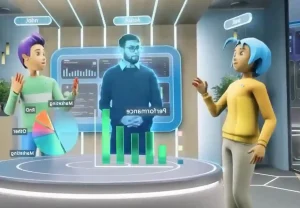
As remote work becomes more prevalent after during and after COVID-19 pandemic, the Metaverse promises to transform how we view workspaces and collaboration. Instead of signing onto video calls from home office computers, imagine entering a virtual boardroom where your colleagues appear as though they were physically present – in this virtual environment, you could brainstorm on virtual whiteboards, review 3D models together, have side conversations, or even initiate collaborative tasks–all without leaving home!
For instance, architects from different nations can collaborate on virtual building projects using digital blueprints manipulated live. At the same time, engineers simulate complex systems or troubleshoot issues together from anywhere around the globe – unlocking innovation. It removes barriers such as distance and time zones for greater collaboration across continents.
Education and Learning:

Education is another area which holds inspiring promise. Traditional online learning often fails to engage students and lacks interactive elements necessary for effective in-person teaching; the Metaverse provides learning environments where students can explore historical events, conduct virtual science experiments, or practice languages by conversing with digital avatars.

Imagine taking part in an immersive history lesson where you can witness key historical figures interact and significant events unfold before your very eyes, or in biology class where you get down to cell level to explore its inner workings – these experiences make learning more engaging and memorable, helping students better grasp complex concepts.
Virtual Concerts, Events, and Beyond:
Entertainment industry players are quickly harnessing the potential of virtual concerts and events, and virtual concerts are becoming increasingly popular. You can virtually attend your Favorite artist’s concert through virtual concerts—whether from the front-row seat or the stage itself! Such events may bring together millions of fans who experience each performance from unique viewpoints.
Beyond concerts, the Metaverse offers untold entertainment potential. Virtual theme parks, interactive movies, and digital art galleries are just a few ways this technology can create customizable forms of entertainment – perfect for gamers, musicians, artists, theatregoers, or fans of other forms.
Commerce-Shopping and Virtual Goods:
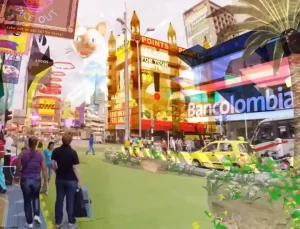
The Metaverse promises to revolutionize how we think about shopping and ownership of goods. Shopping experiences no longer need to be restricted by physical stores or traditional e-commerce websites—imagine entering an endless virtual mall where you can browse stores, try on clothes with your avatar, and purchase digital versions of items that can be worn or used within this digital universe!
Commerce in the Metaverse does not stop there; virtual goods can be traded and sold on platforms like Blockchain technology. One unique aspect of these virtual items is their traceability – NFTs play an integral part in providing proof of ownership and authenticity of digital.
An example would be a fashion brand selling limited-edition virtual jackets exclusively worn by avatars in the Metaverse as status symbols—much like luxury goods in real Life. Integrating cryptocurrency payments further expands this digital economy by enabling consistent cross-border transactions without the need for traditional banking systems.
Healthcare and Telemedicine:


Healthcare is another area that holds huge promise. Thanks to VR and AR advances, healthcare professionals could use virtual reality (VR) and augmented reality (AR) technologies to revolutionize how they interact with patients and conduct treatments.
Telemedicine has expanded substantially due to the global pandemic and could reach new heights within this virtual reality (VR). Imagine having a consultation where your doctor interacts directly with a 3D model of your body while discussing areas of concern in real time – this would revolutionize healthcare dramatically!
Surgeons could use virtual reality (VR) training to practice complex procedures safely before performing them on actual patients. Such simulation-based practice could improve outcomes by helping doctors refine their skills within an immersive virtual environment. Patients could use VR for pain management or anxiety relief during procedures by immersing themselves in relaxing virtual realities that provide soothing environments during these anxious procedures.
Real-World Simulations and Training:
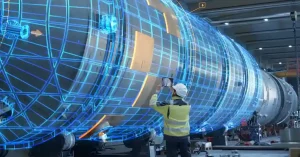

One of the critical applications of the Metaverse is in real-world simulation and training. It allows highly realistic simulations to be created that can be used for training across industries – for instance, pilots could practice emergency procedures in a virtual cockpit that mimics accurate airplane controls and environments without safety risk, while military personnel could engage in virtual combat scenarios that prepare them for real-life combat situations.
Engineers and architects could leverage the Metaverse for construction purposes to visualize digital twins of buildings before their physical creation. This would help engineers identify design flaws and allow teams to work more effectively by sharing a single virtual model regardless of the distance between team members.
Training in the Metaverse isn’t exclusive to professionals; it can also be used for everyday scenarios, such as driving practice for new drivers or emergency response training for civilians. Simulation replicates real-life conditions safely and securely, making the concept an invaluable asset in education and skill development.
Opportunities & Concerns
As the Metaverse evolves, numerous challenges and concerns must be addressed for a safe, fair, and inclusive environment. These concerns span privacy, legal, ethical, and social dimensions – understanding these requirements is imperative when engaging or developing for this space.
Privacy & Data Security
One of the primary issues is privacy and data security. Users will interact with various platforms through technologies that collect large amounts of personal data – not only basic information such as usernames and avatars but also more sensitive details like biometric information, facial expressions, and even emotional responses.
Preventing data misuse is challenging; companies could exploit this information for targeted advertising campaigns or sell it, leading to privacy breaches. Furthermore, given the captivating and universal nature of surveillance tools, tracking and surveillance can become even more common as users’ interactions and activities are monitored in real-time.
To address these concerns, robust data protection regulations are essential. Users must have control over their information collection practices, be able to opt out if certain practices come under scrutiny, and have a right to know how their data is being utilized.
Legal and Regulatory Challenges
Legal issues surrounding the Metaverse remain relatively uncharted territory. This emerging digital frontier poses unique regulatory challenges that do not neatly fit into existing legal frameworks. Questions around intellectual property rights, ownership rights, and jurisdiction are just the tip of the iceberg.
Assuming someone creates something, who owns it? And in cases such as theft of virtual goods or harassment committed in cyberspace, which laws apply and who enforces them? These are complex questions that necessitate new legal structures to ensure that the Metaverse does not become an ungoverned digital space.
Regulators must collaborate closely with technology companies to draft rules that protect user rights while simultaneously encouraging innovation. This may involve developing new categories of digital rights or creating international agreements to manage cross-border interactions.
Harassment & Virtual Crimes
As the Metaverse becomes more crowded, ethical issues like harassment and virtual crimes increase exponentially. Just like real-world users may experience bullying or stalking, however, in the hypnotic nature of the Metaverse, these experiences may become even more intense and damaging.
To address these problems, platforms must implement accurate codes of conduct and tools for reporting and addressing misconduct. Furthermore, more in-depth discussions about ethical considerations within Life in the Metaverse should occur in order to create safe communities.
Digital Divide & Accessibility
The Metaverse offers new possibilities but also risks widening the digital divide. Access to its opportunities requires internet connectivity and expensive equipment like VR headsets that may not be accessible to everyone – leaving many behind in its fullness.
Additionally, the Metaverse must be accessible to individuals with disabilities. This involves making virtual environments navigable for those with mobility issues and making interactions possible for those with hearing or visual impairments. Without due care given to accessibility considerations, the environment could become an exclusive space that excludes large segments of its user base.
To bridge these gaps, developers and policymakers should prioritize inclusive design when developing and deploying technologies to ensure everyone can participate regardless of socioeconomic status or physical abilities.
Psychological & Social Consequences
The Metaverse’s magical nature can have profound psychological and social subdivisions. On one hand, it offers unprecedented opportunities for social engagement across distances; people can connect more instantly and reliably than through current online platforms. However, spending too much time in virtual realities could lead to addiction, social isolation, and an altered sense of reality.
Some users may use the Metaverse to escape real-life challenges, possibly neglecting genuine relationships and responsibilities in their natural world. Furthermore, its highly curated environments may create unrealistic expectations that lead to dissatisfaction with reality – similar to how social media affects its users today.
Exploring the Future
As the metaverse advances, its future holds great promise and potential. Predicting exactly how it will play out requires a combination of technological forecasting, market analysis, and understanding the shifting landscape of user interaction. Let’s explore what awaits and how it might transform our digital and physical realities.
Predictions and Trends
In the coming years, experts predict the Metaverse will experience rapid expansion due to technological advancements and growing interest from users and businesses alike. Some estimate it could become a multitrillion-dollar industry by the end of this decade with impacts in the entertainment, retail, education, and healthcare sectors.
Analysis of Potential Market Size & Economic Impact
The Metaverse will have an economic impact on job creation as it helps businesses set up virtual storefronts and offices that require virtual architecture services, digital asset management services, and development services. Businesses could significantly increase job demand when virtual storefronts or offices open for businesses that require skilled professionals in these areas.
Evolution of User Interaction & Engagement
User interaction in the Metaverse will change significantly over time. While traditional online experiences tend to be passive, the Metaverse promises an interactive platform where users can engage with each other and digital objects in real time – creating more personalized interactions while giving people space to express themselves through avatars and create virtual spaces.
As the Metaverse evolves, we may witness more sophisticated social networks emphasizing presence and engagement over likes and shares.
Role of Web 3.0:
The Metaverse is closely tied to Web 3.0, the next phase in internet evolution. Web 3.0 features decentralization, where users have greater control of their online data and identities; similarly, this would mean seamless transitioning across platforms while maintaining ownership over digital assets such as blockchain technologies.
Web 3.0 envisions an Internet where communities play an active role in shaping its platforms. This parallels with the Metaverse’s promise of interoperability; users can easily create, share, and monetize content across virtual worlds without being restricted by single platforms.
Big Tech and Start-ups in Collaboration:
Big tech companies are currently in charge of developing the Metaverse. Companies like Meta (formerly Facebook), Google, Apple, and Microsoft spend billions developing hardware, software, and infrastructure necessary for its creation. While these giants possess enough resources to push beyond what’s possible, they still come under scrutiny over issues like data privacy, market dominance, and ethics caused by their technologies.
While start-ups play an integral part in driving innovation, they play an even more critical role. Their strength is often being agile and willing to experiment with novel concepts, ranging from blockchain-based virtual worlds to innovative forms of digital interaction.
As the Metaverse expands, the relationship between big tech and start-ups will become increasingly critical.
Opportunities for Global Collaboration and Governance:
The Metaverse offers a unique global collaboration and governance opportunity that transcends geographical barriers and traditional regulatory frameworks. As this digital landscape continues to expand, its potential for creating truly inclusive and collaborative environments grows; however, doing this successfully requires carefully considering how governance structures will operate within such an imprecise ecosystem.
Global Collaboration :
One of the most significant advantages of the Metaverse lies in its capacity to connect people from various corners of the globe in a shared virtual space, opening up incredible new opportunities for international cooperation in business, education, and social initiatives.
Imagine teams from different nations working collaboratively on complex projects without physical distance limits hindering innovation or problem-solving efforts – this would accelerate innovation on an unprecedented scale! Furthermore, the Metaverse could serve as a platform for cultural exchange and understanding.
Good governance :
Although the Metaverse offers great potential, its governance poses unique challenges. Conventional models—those relying on physical borders and central authorities—may not directly apply; therefore, new models of decentralized governance will need to be developed to keep it an equitable space for all its users.
Decentralized autonomous organizations (DAOs) may offer one solution for metaverse governance. DAOs are organizations run by code and overseen by the community through transparent voting procedures; DAOs could control various aspects of the Metaverse, from virtual economies to content moderation – ensuring decisions are made collectively and fairly.
International cooperation will be essential in creating and enforcing regulations safeguarding users’ rights and ensuring ethical practices within the Metaverse, including data privacy, intellectual property rights, and online harassment issues. To avoid fragmented metaverse regions operating with disparate rules, governments, international bodies, and tech companies must work together toward developing standardized regulations applicable across the virtual world.
Global Institutions like the United Nations (UN) or World Economic Forum (WEF) could play an important role in shaping metaverse governance.
Regulation & Governance
As the Metaverse rapidly evolves, so does its need for a regulatory framework capable of keeping pace. Given the global nature of its potential application in all aspects of our lives, a comprehensive approach to governance is necessary; not only must laws that safeguard users, but they must also be adaptable enough to take account of an ever-evolving digital landscape.
The Importance of Agile and Predictive Regulation:
Traditional regulatory frameworks tend to lag behind technological innovations, leaving users vulnerable. With new technologies and uses continuously emerging within the Metaverse, agile and predictive regulation is critical; laws must be flexible enough to grow as the virtual world develops while also anticipating potential issues before they arise.
As current regulations may not fully cover the intricacies of virtual property ownership, digital identity management, or the economic ramifications of virtual currencies, lawmakers need to collaborate with technology experts to forecast how these elements might develop over time and ensure that the legal framework provides sufficient protection.
International Cooperation and Standards:
The Metaverse is global in scope, transcending national borders and legal jurisdictions. This presents unique regulatory challenges; no single country can govern it alone; therefore, international cooperation is vital in developing standards that apply universally to users across different locations and ensure consistent experiences no matter where they reside.
Cooperation could involve international bodies like the UN or World Economic Forum and newly created institutions specifically established to oversee the Metaverse. Such institutions could set global standards for data privacy, cybersecurity, and ethical behaviour, which are then adopted by individual nations. This approach helps prevent fragmented metaverses where users in various regions face vastly differing rules and protections.
Companies playing a key role in developing and maintaining should assume great responsibility to ensure it remains safe and equitable for users. Users should stick with ethical principles that prioritize everybody’s well-being over the maximization of profit.
Companies operating in the Metaverse must be transparent in how they collect, use, and share user data. Furthermore, they should pledge to safeguard user privacy by not serving harmful purposes like harassment, misinformation, or any form of abuse within their platform – this may involve taking measures such as blocking specific IP addresses to limit misuse by spammers.
Human Rights Protection:
As more people spend time online, it becomes ever more crucial that their rights are upheld online as in physical reality. Human rights principles such as freedom of expression, privacy, and equality should also be observed online.
However, the Metaverse poses new threats to human rights protection. Pervasive surveillance and data collection could threaten users’ privacy and freedom of thought; to combat this threat effectively, regulations should be put in place that limit how closely companies monitor or influence users’ behaviours.
Accessing the Metaverse must also be accessible, giving everyone an equal opportunity to participate regardless of socioeconomic status, geography, or physical abilities. To do this effectively requires making available all technologies needed and designing its universe accordingly.
Overcoming Challenges of Surveillance Capitalism:
Surveillance capitalism – where companies collect large quantities of user data to provide personalized services and sell targeted ads – has long been an issue on the Internet. Still, with access to even more detailed user behaviour data from across all corners of existence, surveillance capitalism could become even more widespread than it already is.
To protect against misuse and manipulation in the Metaverse, stringent regulations on data collection and usage must be put in place. Users must have full control of their personal information as well as be fully informed regarding its usage; further restrictions should also be imposed on how far companies may use this data for commercial gain.
Governments and international bodies should collaborate to uphold these regulations and hold companies responsible for any breaches.
Popular Culture and Media

Though still evolving in reality, the metaverse concept has long been present in popular culture and media. From literature to movies, its appealing qualities as an imaginary space where people can escape reality by engaging with virtual realities have captivated creators and audiences alike. Here, let us investigate how various media portrayals have affected public understandings and expectations regarding this virtual realm full of life-altering potentialities.
Representation in Literature and Movies:
Ernest Cline’s Ready Player One (2011) significantly influences the metaverse concept. This novel and its film adaptation present a dystopian future where people spend much of their lives immersed in an immersive virtual reality known as the OASIS, providing users with an escape from physical reality while engaging in limitless adventures that could potentially lead to love or fame.
As we earlier discussed, movies like The Matrix and Tron have also explored similar themes, portraying virtual worlds that blur the line between reality and fiction. These films have contributed significantly to our cultural understanding of what the Metaverse could become, shaping technology development efforts today and people’s knowledge of digital realities.
Public Perception and Media Hype:
Tech giants such as Meta (formerly Facebook) and Microsoft investing billions into developing metaverse platforms have only served to heighten media interest in this concept, with news outlets regularly emphasizing its ability to transform social interaction, work productivity, entertainment, and commerce.
Media hype may create unrealistic expectations of what a fully functional metaverse looks like; that imagined by sci-fi authors is still some way away. Current metaverse platforms, while impressive, face significant technological and social obstacles. Thus, the gap between its depiction in media and reality may cause excitement and scepticism among public members.
Sci-Fi Has Shaped Our Vision:
Science fiction has enormously influenced public perception of and development of the Metaverse and shaped tech companies’ explorations of ideas such as dynamic virtual environments, avatars, and digital economies first seen in sci-fi literature and films.
For example, avatars, virtual representations of users in virtual worlds, were popularized in sci-fi narratives decades before they became technically feasible. Additionally, the idea of digital economies where virtual goods have real-world values can be traced back to such fictional settings.
Sci-Fi’s influence can be both inspirational and disillusioning. On the one hand, sci-fi spurs creativity by encouraging innovation and creativity among developers; on the other hand, its high expectations may create challenges to meet in reality, potentially leading to disillusionment should real-life Metaverse fall short of fictional ones.
AR Glasses-Transforming Daily Life by 2030
Augmented reality (AR) will become an everyday feature by 2030 with widespread adoption of AR glasses. These glasses will look indistinguishable from regular eyewear while providing users access to phone calls, emails, music streaming services, navigation maps, and interactive gaming using hand gestures.
AR contact lenses provide careful displays with AI-generated visuals powered by lidar sensors for accurate 3D mapping, making AR contact lenses increasingly popular for their seamless integration and real-time language translation capabilities.
AR can improve shopping by displaying product details with recipe navigation. At the same time, education uses AR for interactive 3D models for subjects such as biology and astronomy. Furthermore, navigation becomes more straightforward thanks to AR providing route guidance as well as real-time information overlay in various environments.
Conclusion
The Metaverse is more than a passing trend; it represents an innovative concept with the power to transform how humans engage with technology and each other completely. Now that we are on the verge of entering this new digital frontier, understanding its impacts is absolutely critical.
The Metaverse poses numerous serious threats and concerns, including data privacy, the digital divide, and potential screen addiction issues. If not managed appropriately, the Metaverse could exacerbate existing inequalities or create new ones – for instance, those without access to advanced technologies could fall further behind, widening the digital divide even more significantly.

